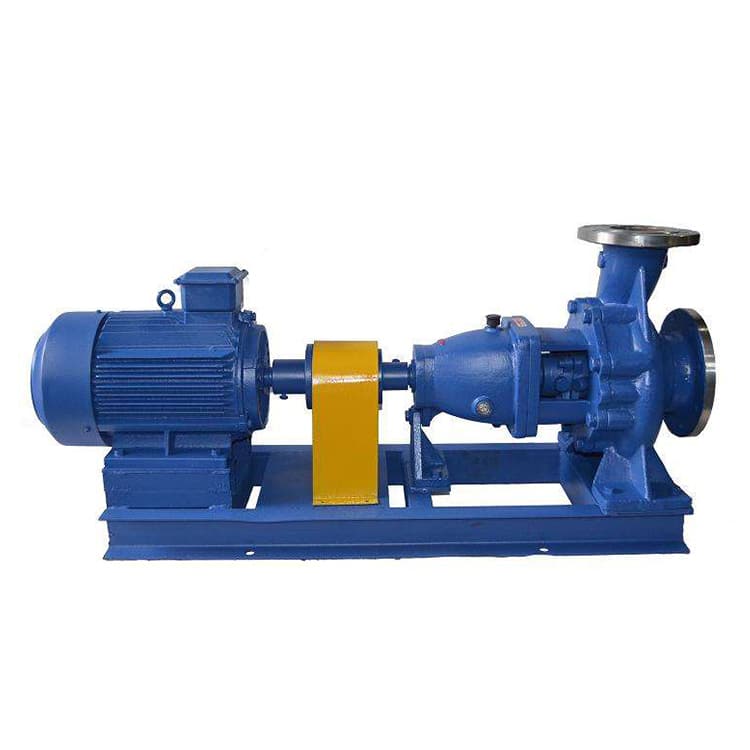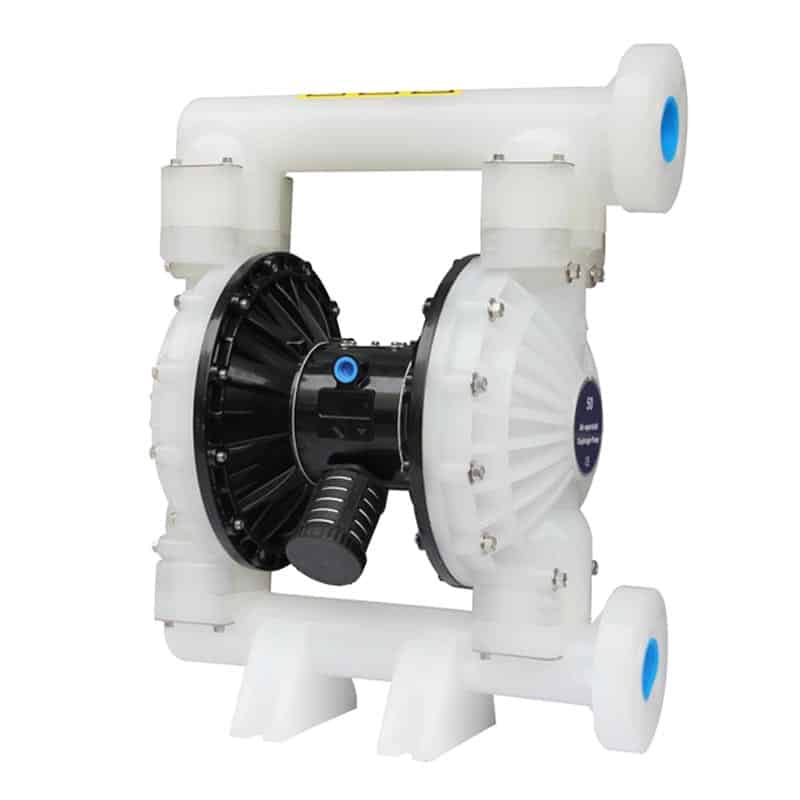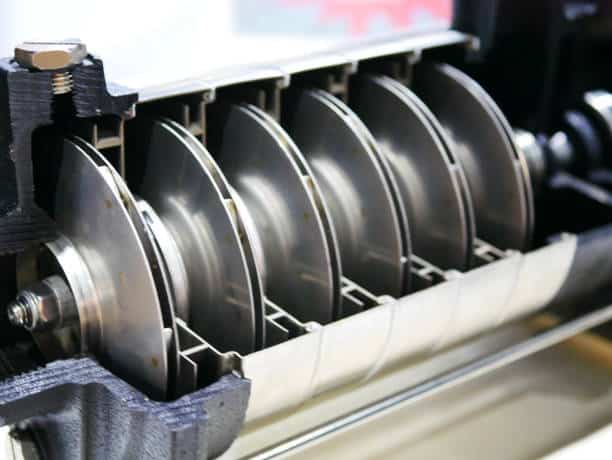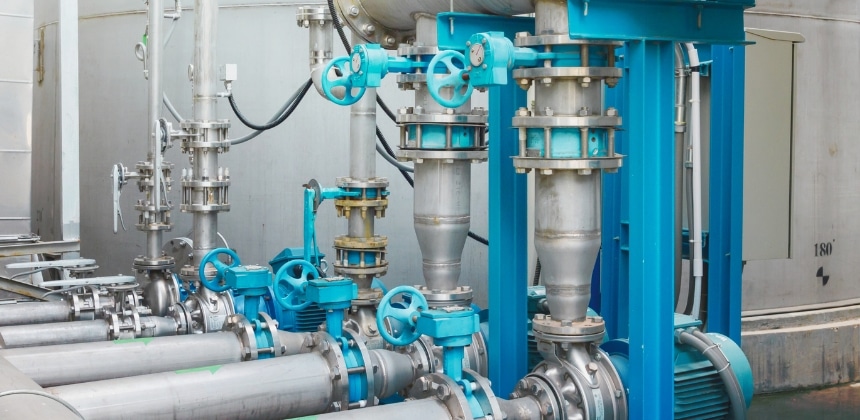Pump Not Working
Pumps are vital pieces of equipment in industrial and domestic applications. However, pump problems can lead to interruptions in production or inconveniences in everyday life. In this article, we’ll explore how to effectively identify and solve the common problem of a non-functioning pump to help you get back up and running quickly.
What’s the pump?
Types of Pumps
Pumps are divided into two main categories: Dynamic pumps and positive displacement pump.
Dynamic pumps: These include centrifugal pumps, which use a rotating impeller to transfer velocity to the fluid and convert it to pressure.
Positive displacement pumps: These pumps move fluid by trapping a certain amount of fluid and pressing the trapped fluid into a (displacement) discharge pipe. Examples include piston pumps, gear pumps, and diaphragm pumps.


Key Components And Their Functions
Impeller or rotor: In centrifugal pumps, the impeller is critical to fluid flow.
Casing: Protects the internal components and directs the flow of the fluid.
Shaft: Transfers mechanical energy from the motor to the impeller.
Bearings: Support the shaft and reduce friction.
Seals: Prevent leakage of the pumped fluid.
Pump Failure Repair Measures
Targeted repair measures for pump failures include:
Pump Fails to Start or Starts with Difficulty:
- Causes: Power failure, motor failure, internal blockage in the pump body, etc.
- Repair Measures: Check power connections to ensure the power supply is normal; inspect the motor for damage or burnout and replace if necessary; examine the pump body and clear any obstructions to ensure it is not blocked.
Excessive Vibration or Noise:
- Causes: Damaged bearings, foreign objects inside the pump body, improper installation, unstable connection between the pump body and the pipeline, etc.
- Repair Measures: Inspect and replace damaged bearings; clear foreign objects from the pump body; check and adjust the installation position to ensure stability; inspect and secure the connection between the pump body and the pipeline.
Insufficient Flow or No Water Output:
- Causes: Air leakage in the suction pipeline, excessive suction height, clogged filter screen, damaged impeller, etc.
- Repair Measures: Check and repair air leaks in the suction pipeline; reduce the suction height; clean or replace the filter screen; inspect and replace damaged impellers.
Insufficient Pressure:
- Causes: Worn impeller, poor pump sealing, blocked pipeline, low pump speed, etc.
- Repair Measures: Inspect and replace the worn impeller; check and replace pump seals; clear blockages in the pipeline; inspect the pump speed and adjust if necessary.
Pump Overheating:
- Causes: Poor lubrication, cooling system failure, excessive pump load, etc.
- Repair Measures: Check and replenish lubricant; inspect the cooling system and repair any faults; examine the pump’s operating load and adjust parameters to avoid overloading.
How to clean the impeller?
Turn off the power: Disconnect the power to the pump to ensure safety.
Empty the liquid: Close the inlet and outlet valves, open the discharge valve and empty the pump.
Disassemble the impeller: Disassemble the pump casing and remove the impeller.
Cleaning the impeller:
- Soak the impeller in mild detergent and water.
- Gently brush with a soft brush to remove dirt.
- Rinse thoroughly with clean water.
Checking the impeller: Check the impeller for wear or damage and replace if necessary.
Reinstallation: Install the impeller back into the pump body, assemble the pump casing and tighten the bolts.
Test the pump: Reopen the valve, energize and start the pump, and check for normal operation.

Preventive Maintenance of Pumps
1. Periodic inspection
- Appearance Inspection: Inspect the pump’s appearance periodically to ensure that there is no visible damage, oil leakage, or other abnormalities.
2. Lubrication maintenance
- Lubrication point maintenance: Regularly lubricate bearings, seals and other moving parts to ensure proper operation.
3. Electrical system inspection
- Power supply voltage: Measure the power supply voltage regularly to ensure that it is within the specified range and to prevent damage to the equipment caused by too high or too low voltage.
- Electrical wiring: Check whether the electrical wiring is firm and the grounding is reliable to avoid poor contact or short circuit.
4. Cleaning and Maintenance
- External cleaning: Clean the outside of the pump regularly to prevent dust and dirt from accumulating and affecting heat dissipation and equipment performance.
- Internal cleaning: For parts where impurities may accumulate, such as screens and impellers, clean them regularly to prevent clogging.
5. Operating parameter monitoring
- Pressure and flow rate: Monitor the pump’s operating pressure and flow rate regularly to ensure that they are within the normal range. Adjust or repair promptly when abnormalities are found.
6. Spare parts management
- Spare parts stock: Maintain proper stock of commonly used spare parts, including seals, bearings, impellers, etc., to ensure timely replacement in case of failure.
Summary
The proper functioning of pumps in industrial systems directly affects the efficiency and stability of the entire system. When the pump does not work, it is vital to understand and solve the root cause of the problem. Through systematic troubleshooting, regular preventive maintenance and the correct use and management of pump accessories, you can effectively prevent failures and improve the reliability and life of the pump.
AOBL uses high-quality materials to manufacture pumps that can operate stably for long periods even in harsh working environments. The diaphragm pumps are highly wear-resistant and corrosion-resistant, making them a highly regarded choice in the market, suitable for various complex and demanding pumping tasks. Additionally, AOBL offers EODD pumps, sanitary diaphragm pumps, screw pumps, chemical pumps, as well as diaphragms and pulsation dampeners. Visit our website for professional consultation!

